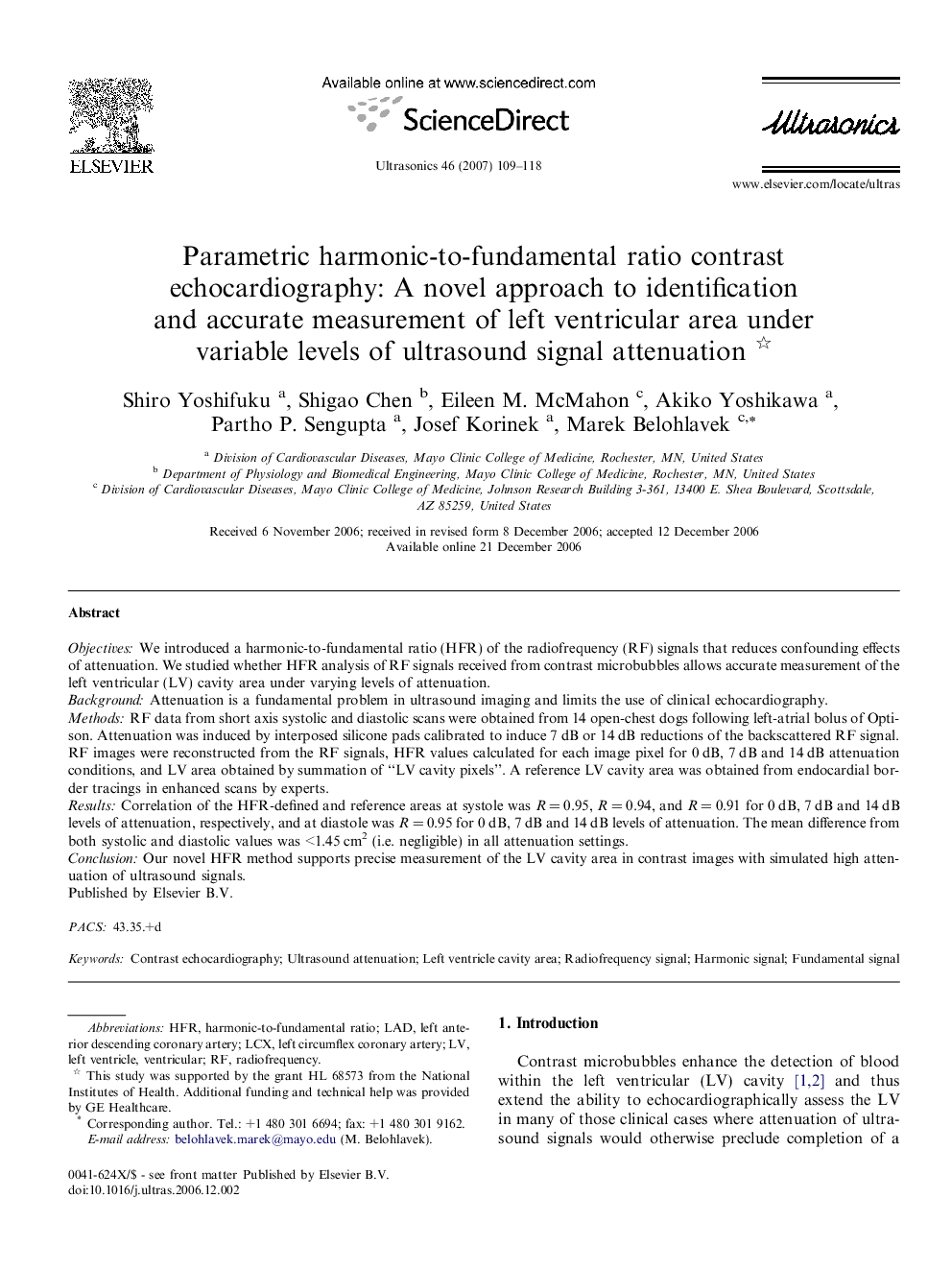| Article ID | Journal | Published Year | Pages | File Type |
|---|---|---|---|---|
| 1760061 | Ultrasonics | 2007 | 10 Pages |
ObjectivesWe introduced a harmonic-to-fundamental ratio (HFR) of the radiofrequency (RF) signals that reduces confounding effects of attenuation. We studied whether HFR analysis of RF signals received from contrast microbubbles allows accurate measurement of the left ventricular (LV) cavity area under varying levels of attenuation.BackgroundAttenuation is a fundamental problem in ultrasound imaging and limits the use of clinical echocardiography.MethodsRF data from short axis systolic and diastolic scans were obtained from 14 open-chest dogs following left-atrial bolus of Optison. Attenuation was induced by interposed silicone pads calibrated to induce 7 dB or 14 dB reductions of the backscattered RF signal. RF images were reconstructed from the RF signals, HFR values calculated for each image pixel for 0 dB, 7 dB and 14 dB attenuation conditions, and LV area obtained by summation of “LV cavity pixels”. A reference LV cavity area was obtained from endocardial border tracings in enhanced scans by experts.ResultsCorrelation of the HFR-defined and reference areas at systole was R = 0.95, R = 0.94, and R = 0.91 for 0 dB, 7 dB and 14 dB levels of attenuation, respectively, and at diastole was R = 0.95 for 0 dB, 7 dB and 14 dB levels of attenuation. The mean difference from both systolic and diastolic values was <1.45 cm2 (i.e. negligible) in all attenuation settings.ConclusionOur novel HFR method supports precise measurement of the LV cavity area in contrast images with simulated high attenuation of ultrasound signals.
